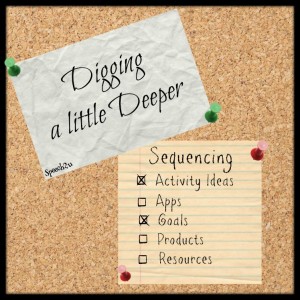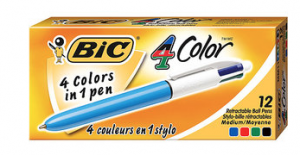My September topic of the month is sequencing. I think it fits since so many of us are trying to figure out scheduling and our students are trying to figure out how their day is supposed to go.
I ALWAYS find myself writing sequencing goals. These are my first steps in working towards narratives. I was thinking a lot about narratives last June when I should have been enjoying the beach weather. (Does anyone else have the end-of-summer blues?)
Assessments
I haven’t used a lot of formalized assessments for narratives of sequencing. I used to use the Expressive Language Test-2 by Linguisystems. I wish that it had gone past age 11. Generally, I wish all tests would norm themselves past their actual age. It would make things easier when trying to test clients who aren’t appropriate for tests like the CELF but whose insurance company would like standard scores yearly.
Generally, I test for narrative/sequencing skills through language sampling. I start by giving the child a set of 3-6 pictures of some kind of familiar routine (ex. brushing teeth, making toast etc.) Then I ask them to put the pictures in order and tell me a “story” about the pictures. I also ask them to tell me about a favorite movie or tv show or something they like to do at home.
I usually tape them while they are doing this-but I don’t always transcribe it. I get busy. It might be helpful to have some sort of voice transcription app like dragon speaking.
I’m looking for a few things-
- Are they using specific nouns/vocabulary or do they fill a lot with vague words (stuff/thing/like).
- Do they start at the beginning and list most of the steps?
- Can they sequence the pictures?
- What is their sentence structure like? If I tell them that the event happened yesterday-can they switch to past tense forms?
- What are their nonverbal language skills like? Do they check in with me to see if I understand?
- Do they tell TOO much information?
Goals
Depending on what I observe, I write goals for the following:
- Understanding and using temporal concepts: first/then, before/after, first/second/third
- Understanding calendar concepts: today, yesterday, tomorrow, etc.
- Understanding and using correct syntax: present tense, present progressive tense, future tense forms, past tense forms.
- Sequencing a series of 3 pictures moving up to a series of 6 pictures for procedural activities. This is one of my favorite because we start by making snacks, activities, crafts and snacks.
- Sequencing parts of a story with pictures
- Sequencing calendar events/events in school without pictures
- Retelling procedures/stories that were told to them using temporal markers. (For example, I might take pictures of the activity and then have them sequence the pictures. I provide a model using a graphic organizer and then have them retell the story/procedure.
- Stating procedures/stories using temporal markers and graphic organizers.
Activities
I write a LOT of this down and we go back and EDIT what we said. It sometimes feels like we are working more on writing-but I’m trying to make verbal speech and communication more concrete.
I love the 4 color pen for working on this.
I write out what the student has said with the black pen. I usually write each step on a single line. If the story is out of sequence, I will have them cut out the lines and have them reorganize it in the correct way. Then we tape it back together.
We use the Red pen to cross off any vague words like stuff or thing. We brainstorm more specific vocabulary and write that with the green pen. I don’t always use the blue pen-but you could use that to correct syntax errors.
I cue a lot by saying what they said and asking them if it sounds good to them to help train the ear. I say things like, “I think I know where you are going with this but as a listener I’m a little confused, what if we tried this…”
Sometimes when we’ve finished working on a sequenced activity, I will video tape them with their final story. We can watch it back and talk about how great they did.
Check back this month to learn about some other activities for sequencing as well as some of my favorite apps, and products for sequencing.
Did you like this post? I’d be super excited if you would share it with your friends and colleagues on Pinterest or Facebook by clicking on the buttons below.




I really love your strategies for showing them what went wrong. I have a few middle school students working on answering “how” questions and this would be very effective for them!
Thanks! I think it’s a great idea to use structured teaching for how questions too-I think they are hard for kids to sequence and answer.
Great post about sequencing…love how you used the pen & incorporated writing!
Thanks!
I decided to try this with one of my students this week. Wow. First of all, the power of multi-colored pens should never be underestimated. My fourth grader resisted the edit until I found a purple pen for her to write with. Writing everything down gave me the opportunity to take a beat and really examine where the deficits were in the student’s telling of the sequence. I’m still fine tuning my use of this, but I’m so glad I found this blog post! Thank you for sharing!
Thanks so much for sharing! It makes my day to hear that this worked well for one of your students!
Great way for “sequencing” how to teach sequencing! I’m off to find some of those different colored pens! : )